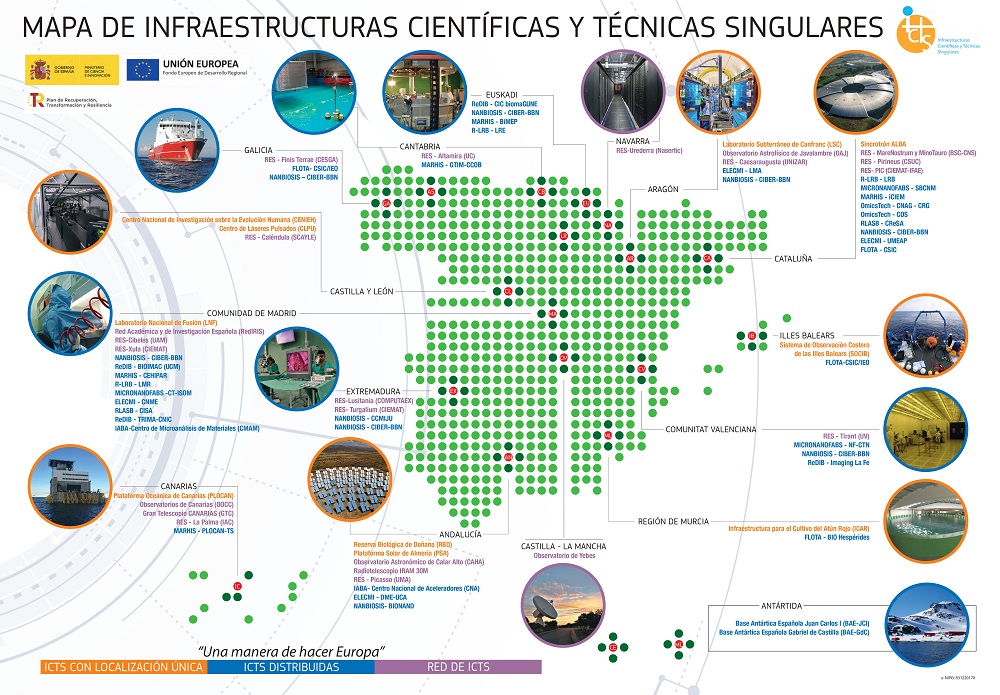The map of the Spanish Unique Scientific and Technical Infrastructures has been recently updated. They are currently 29 infrastructures. The Doñana Biological Reserve (ICTS-RBD) takes part of this map since its creation in 2007. This map is reviewed every four years, when all ICTS must present their results (scientific impact) and strategic plan (2021-2024).
The term Unique Scientific and Technical Infrastructures (ICTS) refers to facilities, resources or services necessary for the development of cutting-edge research of the highest quality, as well as for knowledge transmission, exchange and preservation, technology transfer and innovation promotion. They are unique or exceptional in their kind, with very high investment, maintenance and operating costs, and whose importance and strategic nature justifies their availability to the entire R&D&I community. ICTS have three fundamental characteristics: they are publicly owned infrastructures, they are unique and they are open to competitive access.
Poster of the Map of Unique Scientific and Technical Infrastructure (ICTS) (2022): https://www.ciencia.gob.es/InfoGeneralPortal/documento/7326ca42-ce63-42f5-a584-d2011babc3ec
Further info: https://www.ciencia.gob.es/Organismos-y-Centros/Infraestructuras-Cientificas-y-Tecnicas-Singulares-ICTS.html
https://www.ciencia.gob.es/InfoGeneralPortal/documento/757252d4-a231-4a74-b1e8-93ca95d42eda








 Open Call for Research Projects in ICTS-Doñana!
Open Call for Research Projects in ICTS-Doñana!


